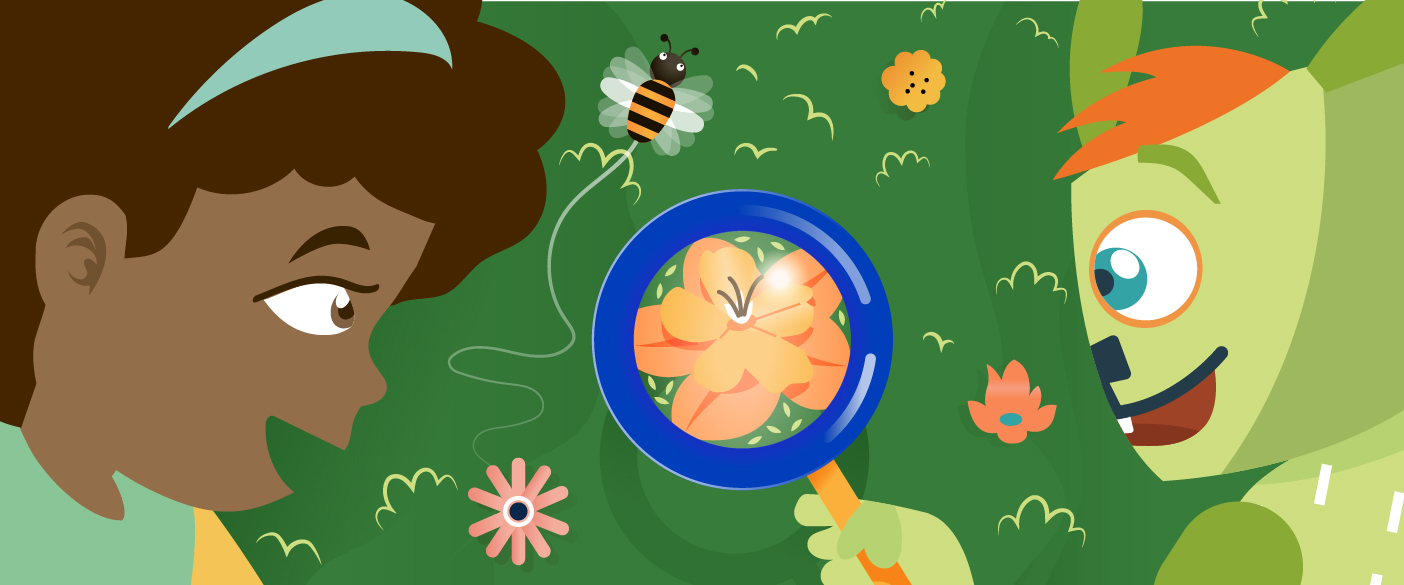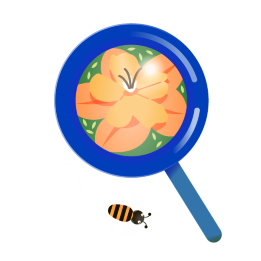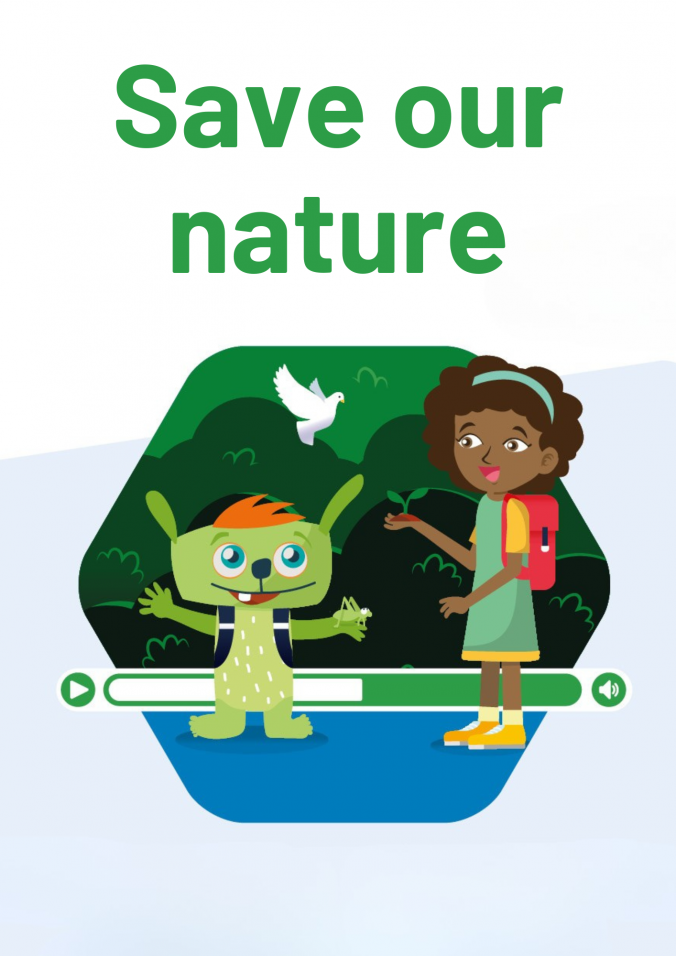Can Trees Affect the Microclimate of an Area?

Overview
Overview
Keywords: trees, microclimate, temperature rise, climate change
Subjects: science, geography
Age group: 6-12 years old
Difficulty level: ● ○ ○ (easy)
![]()
![]()
![]()
This experiment is part of the unit "Flora Focus" written by: Rute Oliveira (PT), Anastasia Papakonstantinou (GR)
Before watching the video, discuss with your students, what consequences the release of greenhouse gases (such as carbon dioxide) into the atmosphere has on the climate and the associated rise in temperature. It is also useful to discuss with the pupils what effect the rise in temperature has on nature, for example in cities.
With this experiment and the explanatory video, young pupils learn how plants can help to reduce the rise in temperature in a simple way, especially in urban areas.
Through the experiment videos, students can grasp the concepts of cause, result and solution, thus training their understanding of cause-effect chains in the environment.
It is an easy experiment to conduct, and it promotes the scientific method (observation – hypothesis – testing – results) in younger ages. Students acquire skills as they observe phenomena, record measurements and compare results. The easy and illustrative experiment can give pupils an insight into the scientific process. It can get them excited about science and encourage them to choose an according career path.
The experiment
Required materials
- 3 thermometers
- an umbrella
Safety note
Important! Do not use thermometers with mercury.
We recommend the use of thermometers for aquariums as they are larger and easier for small children to handle. If a suction cup is attached to the thermometer, this is also useful.
Experiment guide
This activity can be performed by the teacher for the class, but depending on the age and the autonomy level of the students, they can perform the experiment themselves in small groups.
- The experiment requires sunlight, so choose a sunny day to carry it out.
- Find a place in your school backyard with trees. Set one thermometer under the shade of a tree.
- Place another thermometer in a place nearby, directly in the sun.
- Another thermometer can be placed under an umbrella, so that the results from the shade of the umbrella and the tree can be compared. In the experiment video, the measuring stations were 100 m apart.
- Leave the thermometers for ten minutes.
- Come back and compare the results.
The results may vary depending on the location of your school.
Note
Natural phenomena that occur around us are complex and difficult to replicate in the laboratory, therefore we use models. Models are simplifications of reality that allow us to understand what happens in the real world in a more accessible way.
Questions for students
Here are some suggestions for questions that you could ask the students when the video stops.
- Will the thermometers show the same temperature?
- What is different about the three measuring stations?
This worksheet introduces the children to the scientific method. Students learn how to make a hypothesis, conduct an experiment, and compare results.
You can download it as docx and pdf file.
Through the experiment, they get to understand the importance of plants in regulating the climate and cultivate environmental empathy.
The experiment with the result
Climate change is a global phenomenon, as the temperature on our planet is rising. This is mainly due to so-called greenhouse gases.
These gases ensure that the energy from solar radiation, the heat radiation, remains in our atmosphere and thus heats it up. The heat radiation from the sun first hits the earth's surface, is then partially reflected and actually sent back into space. However, greenhouse gases such as methane and carbon dioxide absorb the heat radiation so that it cannot reach outer space. The main reason for the rise in temperature on our planet is carbon dioxide, which is partly caused by human activity.
What can we do to reduce the impact of CO2 accumulation?
One way is to increase the amount of trees in an area to influence the microclimate. The microclimate is the distinctive climate of a small area, such as a garden, a park or part of a city.
Research shows that trees in urban areas influence the microclimate by providing shade, cooling and reducing air pollution.
Trees can cool an area through transpiration. Water from the roots provides nutrients to the tree and evaporates through the leaf's stomata. Stomata are organelles the leaves have to take in CO2 and let O2 out during photosynthesis. This process helps lower the temperature of the surrounding area, just like evaporation.
Another process in tree physiology is evapotranspiration. It combines both the evaporation from the soil and the transpiration from plants Trees release moisture that cools the surrounding air. More trees mean there is more evaporation. This effect can be significant in hot and dry environments.
Students can see that there is so much more to trees than shade.
How does this video link to sustainability?
Urban areas are growing at a fast rate to facilitate the needs of an increasing population. Conditions in these areas can become very harsh. Studies have shown that temperature, especially in the centre of big cities, can be several degrees higher than in the surrounding countryside. Cities are generally warmer than the surrounding landscapes because the pavements and the buildings retain heat and reflect it back to the surrounding air. This is called the urban heat island effect. 2 It results in health problems and greater consumption of energy to cool homes and offices down.
To make our cities more sustainable, green spaces with trees can be introduced in every neighbourhood. These could be the “green lungs” of the city that produce oxygen, absorb carbon dioxide, cool down the area and reduce the use of energy. This reduces the impact of climate change and provides conditions for a healthier life.
Differentiated learning
Explore ideas how you can use this material in your class and adapt it to a group of various levels and learning styles.
Easier
- Conduct the experiment and record the data. Take just one measurement to compare the results.
More challenging
- Have the students predict the outcome.
- Tell them to take several measurements every day, for a significant period of time, a fortnight, month, months, or year.
- Have them make a graph with the data obtained.
- After the explanation, ask them what additional experiments they could do to show that trees cool the area in other ways than just providing shade.
Career orientation
Which career options are linked to this experiment and how can you introduce them to your students?
By exploring this experimental activity on the importance of trees, children can also be inspired to consider future careers in environmental protection. This could be a good opportunity to spark interest in professions that seek to understand and find solutions to climate change, such as: soil scientist, environmental scientist, biologist, environmental laboratory technician and agricultural engineer.
Soil scientist
A soil scientist is a person who studies soil.
Soil scientist career video
Soil scientist video
What is a soil scientist?
Soil scientists study the soil, which is the dirt and ground beneath our feet. They help us understand how soil works, what it is made of, and how it affects plants, animals, and people.
What does a day in the life of a soil scientist look like?
Soil scientists might do different things every day. They could visit different places, like farms or forests, to look at the soil there. They use special tools to dig up soil samples and bring them back to their lab. In the lab, they examine the soil closely to see what's in it, like tiny bugs or minerals. They also test things like how much water the soil can hold or how healthy it is for plants to grow in.
What responsibilities do they have?
They have the responsibility to collect and analyse soil samples and help solve, for example, problems related to the impact of acid rain and soil erosion due to deforestation.
Environmental scientist
An environmental scientist works as a researcher to understand climate change patterns and sea level impacts.
Environmental scientists and specialists video
Environmental scientist video
What is an environmental scientist?
Environmental scientists are nature detectives! They study the Earth and all living things on it to understand how they work together. Their job is to protect the environment and make sure it stays healthy for plants, animals, and people.
What does a day in the life of an environmental scientist look like?
In their day-to-day work, environmental scientists take for example samples of soil, water and air in different places, such as forests, beaches, rivers, seas or cities. They then take these samples to the laboratory to analyse them with various instruments, such as microscopes. Once the analyses have been carried out, it's time to sit down at a desk and analyse the results, writing reports to share their findings with other scientists and institutions that benefit from this knowledge.
What responsibilities do they have?
Environmental scientists have high responsibilities. Their scientific results are fundamental to find solutions to climate change. It is important that their findings are communicated to policy makers and the general public so that they can protect the environment and the climate. They are trying to ensure that we can all live on a healthy planet.
Biologist
Biologists study humans, plants and animals and the environment they live in. They may conduct their studies at the cellular level or the ecosystem level or anywhere in between.
What's a Biologist? website
Biologist video
What is a biologist?
Biologists are scientists who explore the incredible natural world, from plants to animals to microscopic organisms. They study how they live, grow and adapt, and how they interact with each other and the environment. Biologists contribute to many areas, including nature conservation.
What does a day in the life of a biologist look like?
The day-to-day life of a biologist can be very varied. Biologists can spend their day in the field, observing the animals and plants in their natural habitat, or they can collect samples and then analyse them in the lab. They can also spend their days writing reports and articles to share the results of their research with the community.
What responsibilities do they have?
Biologists have a great responsibility to use their scientific knowledge for the protection of nature. Biologists may work for government agencies, research institutions, pharmaceutical companies, or non-profit organizations to contribute to decision-making that promotes the sustainability and balance of ecosystems.
Environmental laboratory technician
Environmental laboratory technicians conduct water quality testing, analyse hazardous waste, and prepare samples for testing. They also calibrate and operate lab equipment, document results, and perform quality control and assurance procedures.
Environmental science and protection technician video
What is an environmental laboratory technician?
Environmental laboratory technicians are scientists who work in a laboratory to analyse samples from the environment. They analyse various samples such as water, soil, and air samples to search for pollutants and contaminants. Environmental laboratory technicians use a variety of specialized equipment and techniques to detect harmful substances. Through their work, they ensure that our environment is safe for everyone.
What does a day in the life of an environmental laboratory technician look like?
Environmental laboratory technicians can work with different samples like air, water, or soil. They measure temperatures, mix substances, put labels on samples, use microscopes to see something that is very small, and other instruments to do analyses. During their day they can analyse data using specific computer programs and can meet with other technicians to share their findings.
What responsibilities do they have?
Environmental laboratory technicians may work for government agencies, environmental consulting firms, or private laboratories. It is their responsibility to perform analyses in accordance with certain standards to ensure that the results are reliable. Through this, they enable their institutions to act to protect the environment.
Agricultural engineer
Agricultural engineers work to optimise crop production, improve soil health, and ensure sustainable agricultural practices.
What is an agricultural engineer?
An agricultural engineer is a scientist who studies plants and soil to help farmers grow crops more efficiently. Agricultural engineers work on farms, research institutions, and agricultural companies to develop sustainable farming practices and solve challenges related to agriculture.
What does a day in the life of an agricultural engineer look like?
Agricultural engineers often work outside, in the countryside, visiting farms to analyse the state of the soil and crops. They also work closely with farmers and discuss with them to find the best way to crop and harvest efficiently. They may collaborate with other scientists and policymakers to address global food security issues and to promote sustainable farming practices.
What responsibilities do they have?
One of the main responsibilities of agricultural engineers is to ensure that crops are grown in a way that is environmentally sustainable and economically viable.
Further ideas
- Your students could build little houses with different materials to put the thermometers under and show that the result we see in the thermometers is not only because of shade.
- They could also create a comic on how cutting trees in our neighbourhood can result in higher temperatures for us.
- Students aged 10-12 can make a micro:bit data logger and take measurements with its temperature sensor. Instructions
If you want to learn more about evapotranspiration, you can do the experiment How do Plants Help Cool our Air? from this material.
The power of Urban Trees, Climate Central
(last accessed 6.12.2024)What’s a Biologist?, Arizona State University
(last accessed 6.12.2024)Learn about data logging with the BBC micro:bit, Micro:bit Educational Foundation
(last accessed 6.12.2024)Wang W, Zhang B, Xiao L, Zhou W, Wang H, He X, Decoupling forest characteristics and background conditions to explain urban-rural variations of multiple microclimate regulation from urban trees (PeerJ, 2018).
(last accessed 6.12.2024)Trees in our cities: 10 reasons we need to plant more, Trees for Cities
(last accessed 6.12.2024)What Urban Trees do for Us, The Woodland Trust
(last accessed 6.12.2024)Pataki DE, Alberti M, Cadenasso ML, Felson AJ, McDonnell MJ, Pincetl S, Pouyat RV, Setälä H, Whitlow TH, The Benefits and limits of Urban Tree planting for Environmental and Human Health (Frontiers in Ecology and Evolution 9/2021).
(last accessed 6.12.2024)Jean-François Bastin: What if there were 1 trillion more trees?, TED-Ed
(last accessed 6.12.2024)If you want to learn more about the topic of temperature rise, your find further experiments in CO2MUCH - Greenhouse Effect and Temperature, aimed at students aged 13-15.
Career orientation videos:
Soil scientist career
Soil scientist
Environmental scientists and specialists
Environmental scientist
Biologist
Environmental science and protection technician
Agricultural engineers(last accessed 6.12.2024)
This experiment is part of the unit "Flora Focus" written by: Rute Oliveira (PT), Anastasia Papakonstantinou (GR)
Share this page

